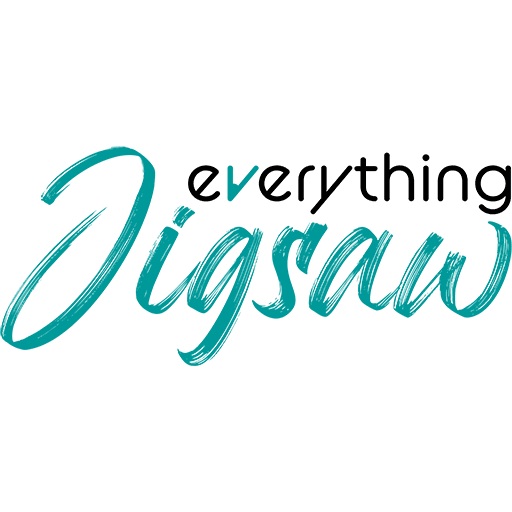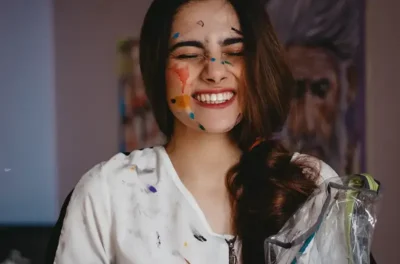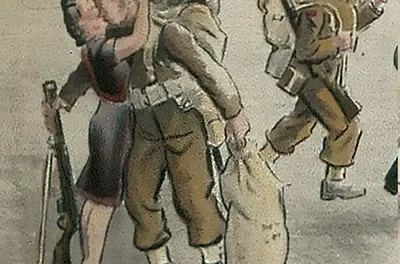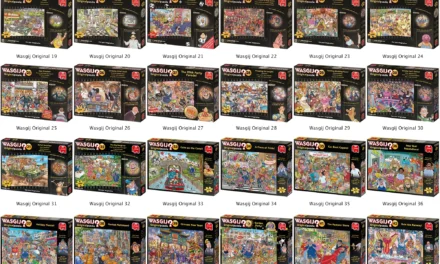How to Choose the Best Jigsaw Puzzle? My Unique Insider’s Guide
“What is the best jigsaw
I will never forget this learning from my previous boss and
I’m Geoff, former Director of Product Development at Gibsons Games with over 20 years of experience in Jigsaw Puzzles.
Welcome to my personal ‘insiders’ guide on what is the Best Jigsaw
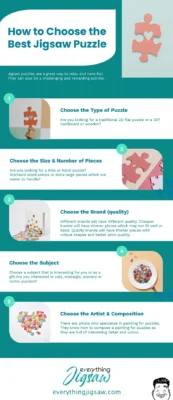
This website is supported entirely by my kind readers - thank you so much for visiting! There are no adverts, and I don't accept any payment for reviews or sponsorship of any product. Instead, there are some links where, if you buy something, I may earn an affiliate commission. As an Amazon Associate, I earn from qualifying purchases at no cost to you. If you do choose to buy through my links - a genuine big thank you!
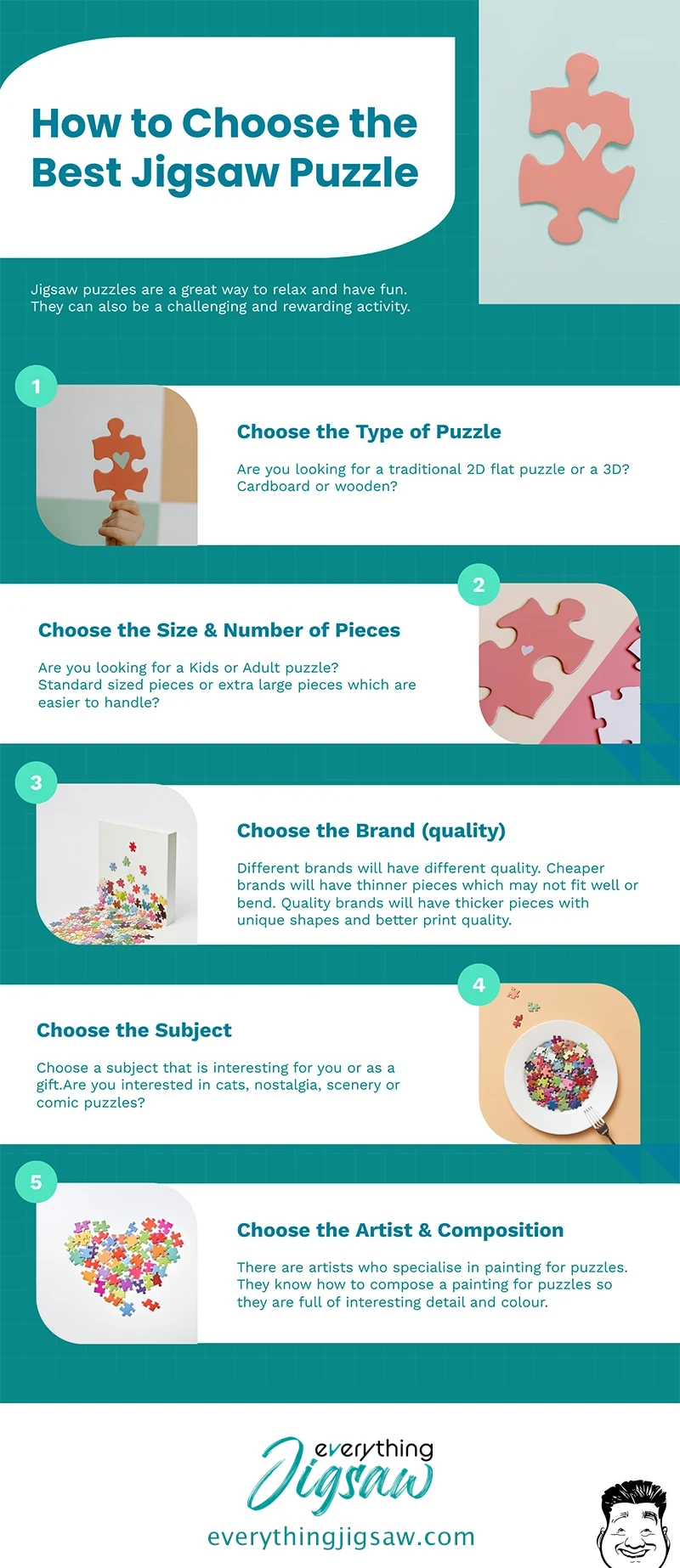
What is the best jigsaw puzzle for you?
There is no such thing as the best jigsaw
There is only the best jigsaw
What are you looking for in a jigsaw puzzle?
These aren’t subjective opinions but practical facts.
If a jigsaw
Flat 2D or 3D jigsaw puzzles?
A 2D
A 3D
Wooden vs Cardboard?
The first choice is which material?
Do you prefer wooden or cardboard?
If you are unsure, then choose a cardboard
They are much cheaper, and there are many more choices.
If you choose wooden, you are likely already a jigsaw
Wooden jigsaw puzzles have great, unusually shaped pieces called whimseys.
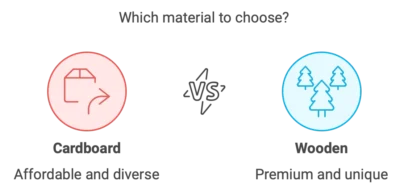
The best Wooden jigsaw puzzles
Do have a look.
Choosing the best Cardboard puzzles
What size of
Adult or kids puzzles
I was involved in product testing children’s puzzles at Gibsons to ensure that individual
If you are buying for children, make sure you buy from a reputable manufacturer for puzzles that have gone through this safety testing, which also covers the use of dangerous inks and glues.
I will be covering the best kids’ puzzles later this year.
Size of the puzzle piece
For adults, there are also different
Some of us need to consider how easy the
The size of a
100-piece and 250-piece puzzles with ‘Extra large’ pieces could be suitable for adults with handling difficulties.
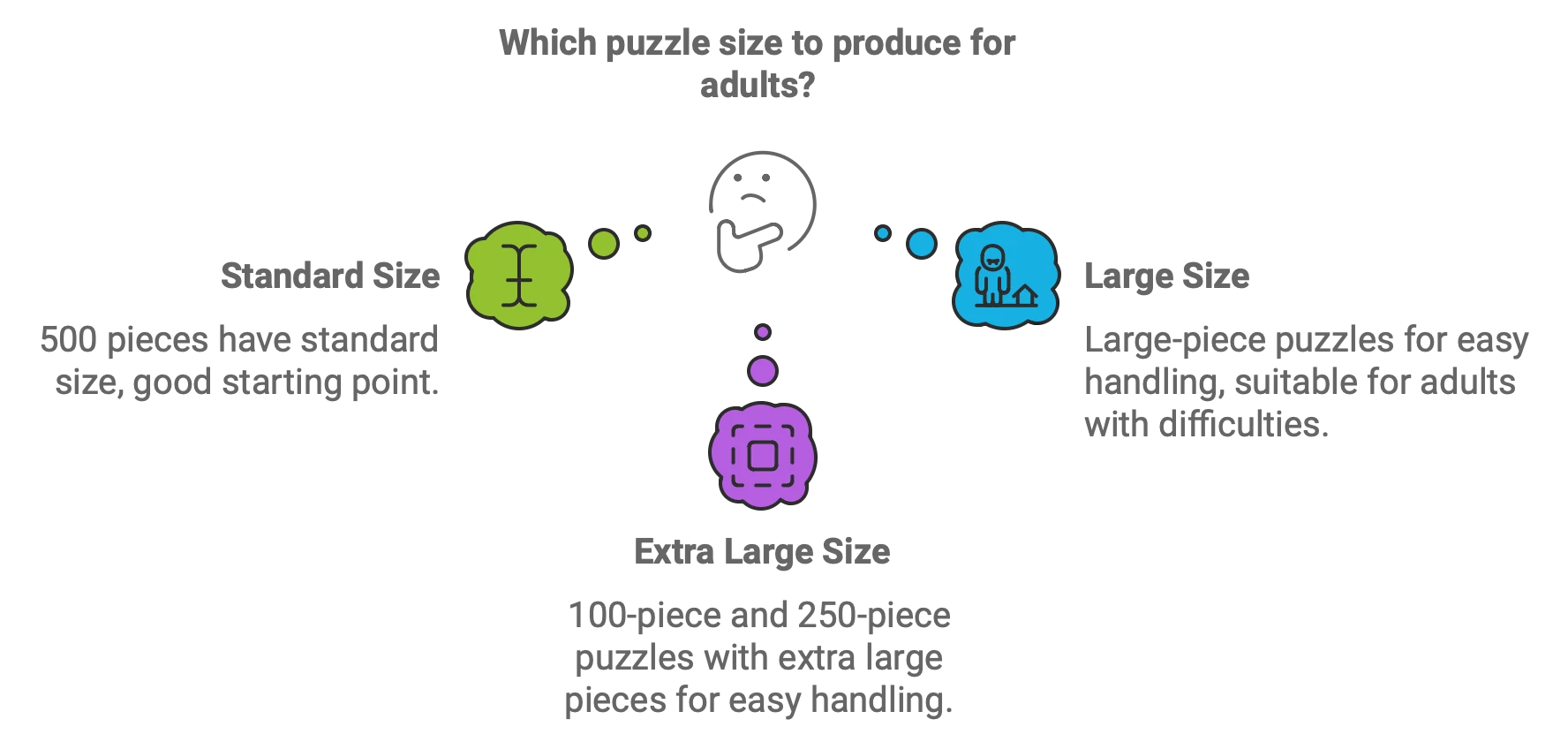
Number of pieces
Adult puzzles tend to start from 100 pieces and above.
500 piece puzzles have a ‘standard’ sized piece and are a good starting point.
1000 piece puzzles are the most popular and outsell 500 piece puzzles by a factor of 4 to 1.
Therefore, if a
1000 piece puzzles, therefore, tend to have the best artwork.
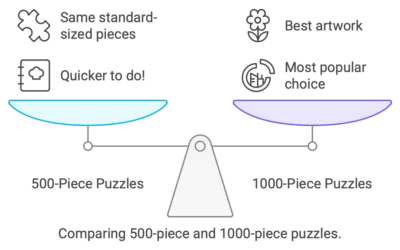
WHAT MAKES A GOOD QUALITY JIGSAW PUZZLE ?
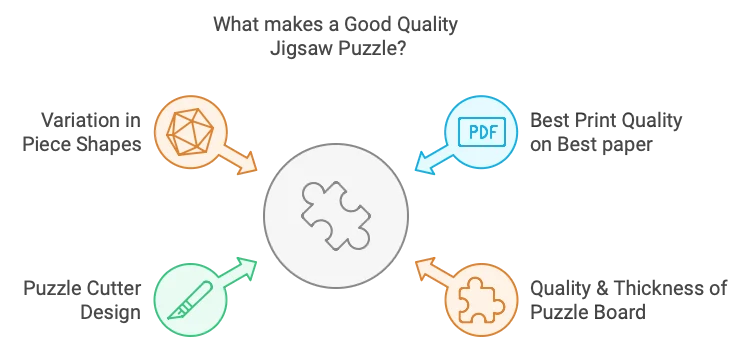
Puzzle brand
The next question could be which brand of
Buying a car, some people will have their favorite brand and only choose a Toyota, BMW or Mercedes.
The same applies to many puzzlers—they will stick with their favourite brand, whether that is Ravensburger White Mountain or Gibsons for cardboard puzzles or Liberty, Wentworth, or Nautilus for wooden puzzles.
There are many reasons for sticking with the same brand. They may like the type of
Puzzle board quality
Most brands will use a special
Puzzle shapes & cut quality
Once the printed paper is ready, it can be glued to the
Puzzle cutting is both a science and an art.
The
Other companies will vary the design so each piece can have one, two or three ‘lugs’ or ‘holes’. So, every piece is actually different and can, in theory, only fit in one place (although sometimes the difference is very small, so you could squeeze it into the wrong place if you wanted).
The greater the variation of
Print quality
The print quality is a significant factor.
The paper should be as white as possible, as it is the background upon which the colours can show brightly.
The paper must also be coated with a special surface so the ink stays on top and isn’t absorbed too much into the paper itself. If it does, the print’s colour and detail will be poor.
If you have tried printing on grey recycled plain paper at home, you will see how flat the colours can be compared to specialist white-coated paper.
Paper and ink are important, and so are printing companies. They control how much ink goes onto the paper, and I have been lucky enough to oversee this process many times – making sure the colours are accurately reproduced with the best saturation and contrast. Every print is different, even for the same image and printing machine—it all depends on the skill of the printer who has to juggle the settings of the giant ink jet nozzles!

Original image quality
The print quality is important, but the stage before is equally important.
If the image is poor-quality to start with, it will become a poor-quality
It all starts with the artist (or photographer). If the artist paints on a tiny 7 x 5cm canvas and the printer has to enlarge that to a 70 x 50cm
I always encouraged the painter to paint on as large a canvas as they could. Trevor Mitchell is a great example of a painter who knows exactly how important that is.
The painting then needs to be photographed or scanned. Again, the better the photographic equipment is at taking the highest original resolution pictures, the better the finished quality—sharper details and more accurate colours true to the actual painting. Just a note to any potential
THE PUZZLE ARTIST!
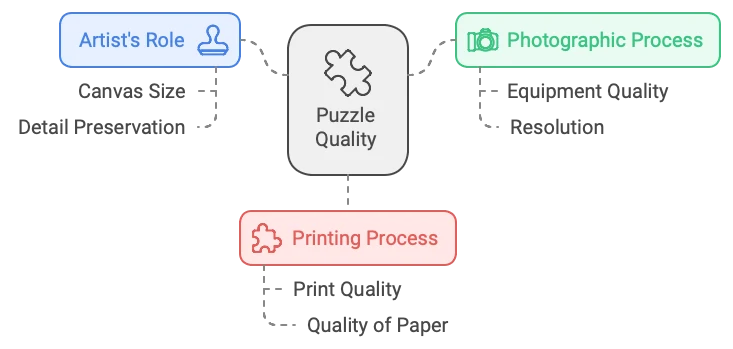
Puzzle subject
So, now we have the best painter with the largest canvas photographed by the best photographer with the best camera, printed by the best printer on the best coated paper with the best ink.
It’s still, however, not the best
The
Only you can determine which pictures you like; nobody else can tell you otherwise.
You may only like cats, so the best
You may like peaceful country scenes of nature, so a busy street scene in New York is not for you.
Luckily, that is why thousands of puzzles exist on hundreds of different subjects.

Puzzle Artist & Style
Now we have the perfectly printed
Let’s pretend the
But you still don’t like the
Different artists have different styles.
You may like photography or comic scenes as opposed to paintings?
You may like brightly colored puzzles but the artist of the
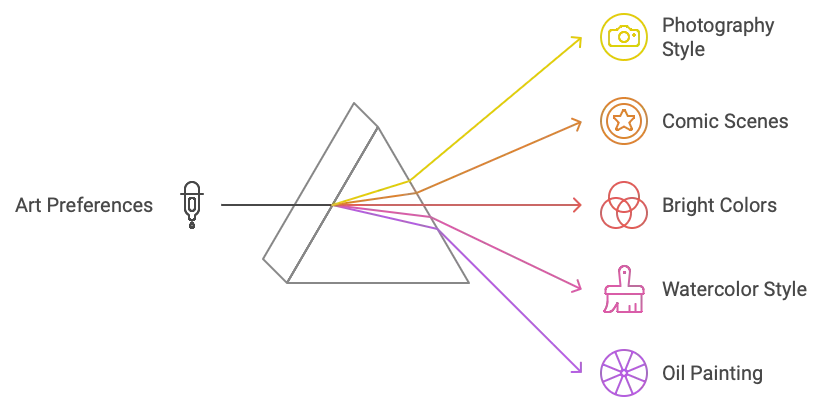
Puzzle composition
Now we have the perfect
Puzzle composition.
The composition of a painting (or photograph) for a
For example, a
Some puzzlers may enjoy the challenge of having 90% of the
An easier, more interesting
Another example of a hard composition would be having lots of plain blue sky covering the top half of the
An easier composition of the sky would be to have it covering only a quarter of the
The more interesting the composition of a
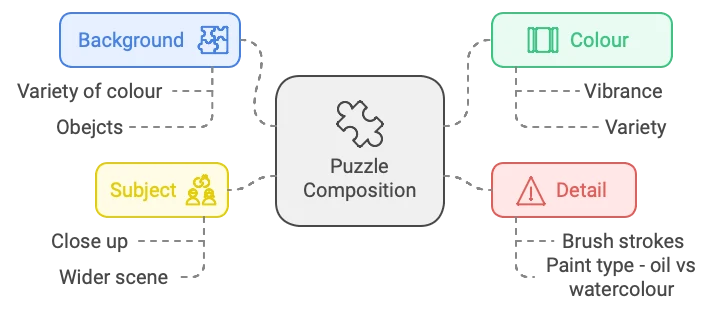
Finally ... does THE PUZZLE tell a story?
Nearly there … we have the perfect
What makes a puzzler pick that particular
A Great
What did Michael mean? Michael talks about an emotional connection with the puzzler.
The best puzzles go beyond colours & composition. They say to a puzzler
Do you remember when …
… you used to visit this sweet shop?
… you went to this seaside town?
… you spent time in the garden with your grandparents?
… you played with your cats in the kitchen?
Now you have the best
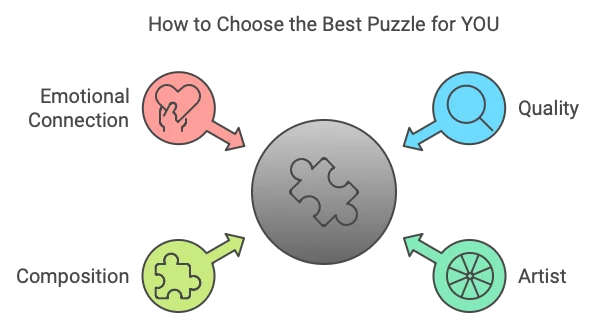
I hope you enjoyed my unique guide to choosing the best puzzle
If you liked this article, find out my thoughts on
The Most Interesting Jigsaw Puzzle for Adults,
a Perfect Puzzle for Grandpa
How to become a Jigsaw Puzzle Artist
and a visit to a Jigsaw Festival!

